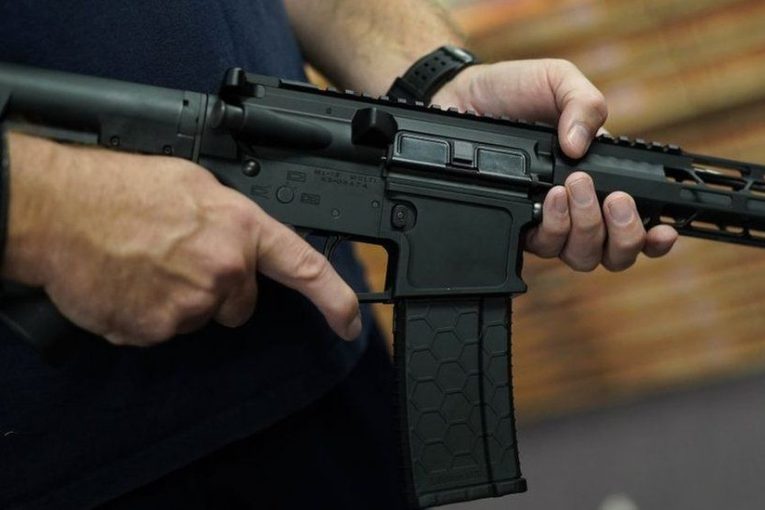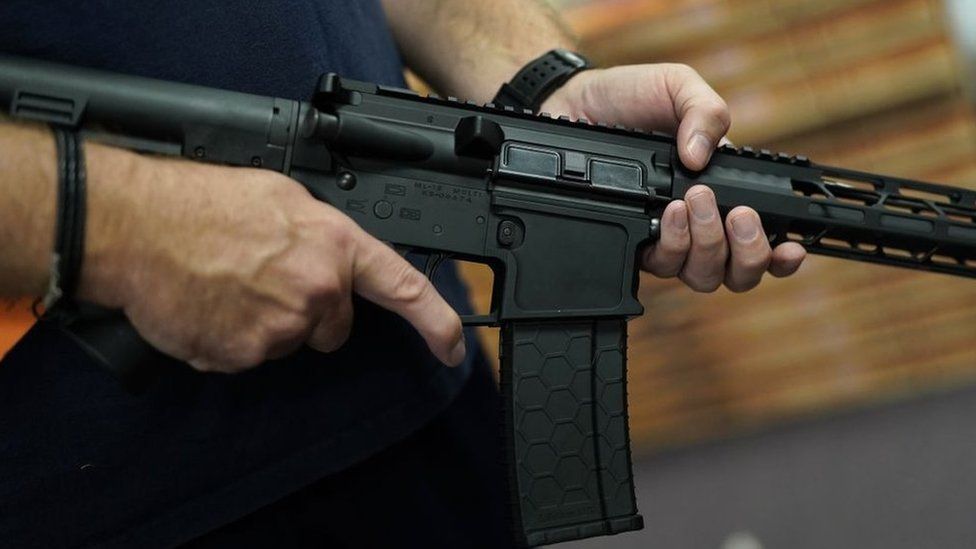

By Allison Hodge
SANTA CLARA, CA – The California Court of Appeals granted a reversal of defendant German Sanchez’s jury conviction in 2019, arguing that the evidence used against Sanchez on one count was insufficient to support a guilty verdict.
The 2019 verdict came from the Santa Clara County Superior Court, which charged Sanchez on three counts in violation of the California Health and Safety Code: possession of a short-barreled rifle or a short-barreled shotgun, possession of a controlled substance while armed with a loaded firearm, and carrying a loaded firearm in a vehicle.
The jury found the defendant guilty on Counts 2 and 3 and granted a three-year term of probation with a four-month jail sentence.
Sanchez appealed his case to the Sixth Appellate District Court, arguing that the evidence used to convict on Count 2 was insufficient, based on the relative availability of the weapon in  his truck.
his truck.
The case goes back to 2018, when Sanchez was pulled over in Santa Clara County for driving with an obscured license plate and faulty brake lights.
Police officers stated that they found 0.55 grams of methamphetamine in the cab of the truck and some type of cardboard or wooden board covering a plastic bag in the bed of the truck, containing a .22 caliber Winchester rifle.
An officer who testified claimed that, at five feet and nine inches tall, the rifle was easily accessible if he were standing next to the truck’s bed. He estimated that Sanchez was around five feet and six to seven inches tall, and could have gained immediate access to the rifle.
The defense, represented by defense attorney Teresa Marie Biagini, appealed on this technicality, maintaining that the language in section 11370.1 of the Health and Safety Code cannot be applied to Sanchez’s circumstances.
Count 2, in this case, prohibits the possession of controlled substances, “[w]hile armed with a loaded operable firearm.” ‘Armed with’ here means ‘[h]aving available for immediate offensive and defensive use.’”
Biagini maintained, “The word ‘immediate’…requires that there be no delay or intervening lapse of time before the gun can be used.”
The defense pointed out that, in violation of this requirement, “The rifle was inside a bag partially covered by a board in the bed of the truck, such that [Sanchez] would have to get out of the truck, walk to the bed, reach into the bed, lift the board, and take the rifle out of the bag before using the gun.”
Biagini, thus, argued that the extent of time it would take Sanchez to retrieve the rifle should not constitute “immediate” access to a firearm. The totality of the actions to reach the rifle, in other words, counts as a “delay or lapse of time.”
The prosecution, led by the California Attorney General’s office, argued that the gun was readily available, “…because Sanchez merely had to step out of the truck and reach over the side of the bed to access the rifle, which was loaded and operable.”
The AG based its claim on two separate cases: People v. Searle (1989) and People v. Bland (1995).
In Searle, the defendant was found to be armed with a pistol that was stored in an unlocked compartment in the back of the car. The AG argued that the case provided a precedent for the proximity of the gun to Sanchez and the likelihood of “immediate” use.
The Court of Appeals, however, questioned the relevance of the case to the matter at hand.
The court responded that “Searle predated the enactment of the statutory definition at issue here, and the gun, in that case, was more readily available to the defendant than the gun in this case because it was located within the interior of the car and did not require him to step out of the car to access it.”
The AG also relied on Bland, a case in which police searched the defendant’s home for cocaine and found unloaded firearms under his bed.
The California Supreme Court, in this instance, found proximity to be important, stating that the defendant “[h]ad the firearm close at hand and thus available for immediate use to aid in the drug offense.”
The Court of Appeals, however, rejected the use of this case as sufficient evidence. Not only did the case deal with a different statute in question, but the guns were also “[m]ore proximate and available to the defendant than the gun in this case.”
The court summarized, in the instance of People v. Bland, “We are not convinced this case supports the Attorney General’s position.”
The court concluded with the assertion that the evidence against Sanchez was insufficient to support a conviction on Count 2, ruling in favor of the defendant’s appeal.
The ruling read, “Based on the plain meaning of the term ‘immediate,’ we conclude the gun was not available for immediate offensive or defensive use as defined in Health and Safety Code section 11370.1.”
The court maintained that the actions Sanchez would have to take to reach the gun were too numerous and time-consuming to qualify as “immediate access,” stating, “Under the plain meaning of the term ‘immediate,’ these facts do not satisfy the immediacy requirement expressly set forth in the statute.”
Sanchez, thus, won a reversal on Count 2 of his conviction, and now only faces punishment for Count 3.
The court reversed the judgment and remanded the case to the trial court in Santa Clara County for resentencing.





